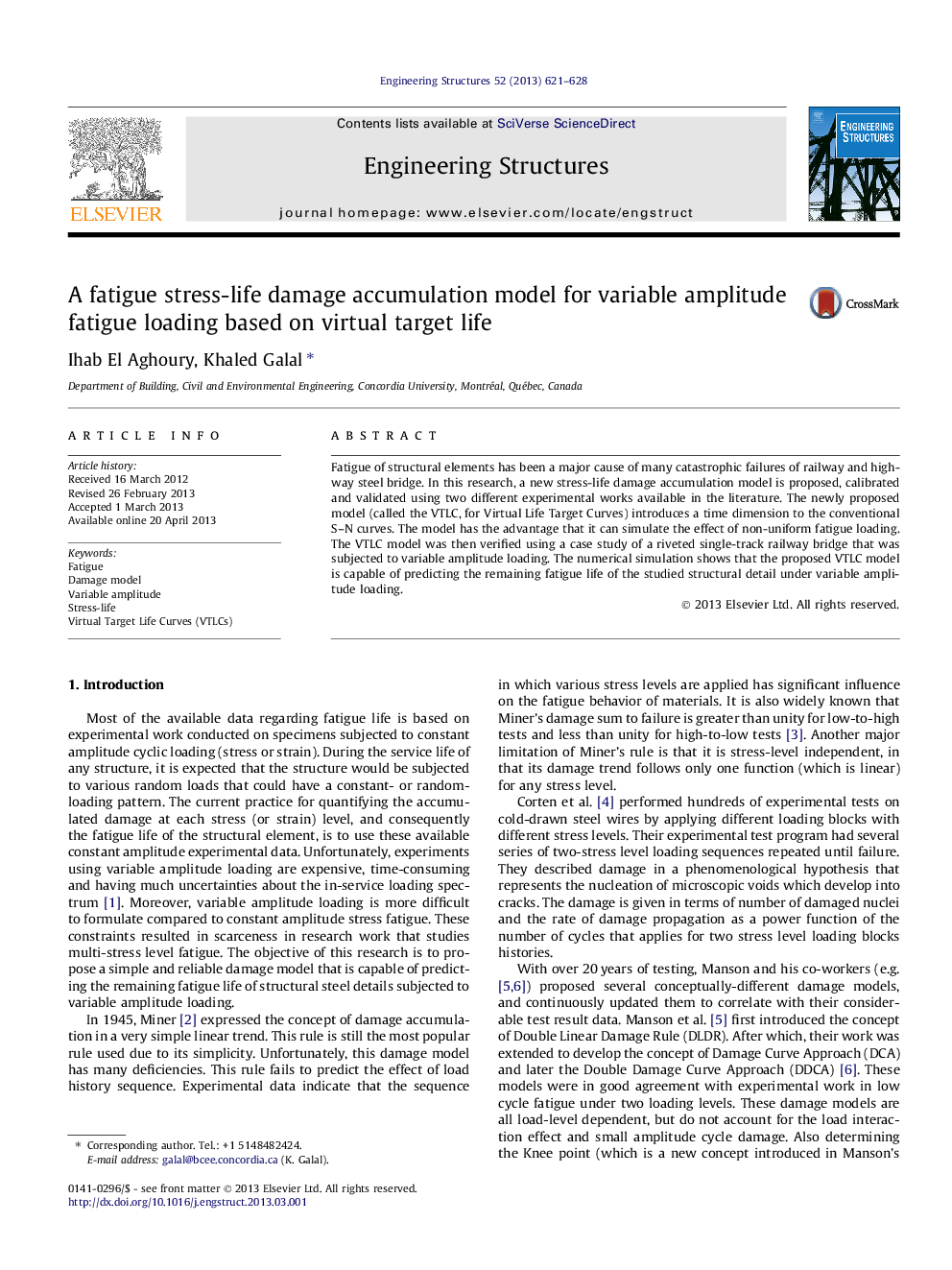| Article ID | Journal | Published Year | Pages | File Type |
|---|---|---|---|---|
| 266980 | Engineering Structures | 2013 | 8 Pages |
•A new damage accumulation model is proposed and validated using experimental work.•The proposed model introduces a time dimension to the conventional S–N curves.•The model can simulate the effect of non-uniform fatigue loading.•A case study of a riveted single-track railway bridge was used to verify the model.•The model can be used to predict the remaining fatigue life of structural details.
Fatigue of structural elements has been a major cause of many catastrophic failures of railway and highway steel bridge. In this research, a new stress-life damage accumulation model is proposed, calibrated and validated using two different experimental works available in the literature. The newly proposed model (called the VTLC, for Virtual Life Target Curves) introduces a time dimension to the conventional S–N curves. The model has the advantage that it can simulate the effect of non-uniform fatigue loading. The VTLC model was then verified using a case study of a riveted single-track railway bridge that was subjected to variable amplitude loading. The numerical simulation shows that the proposed VTLC model is capable of predicting the remaining fatigue life of the studied structural detail under variable amplitude loading.
